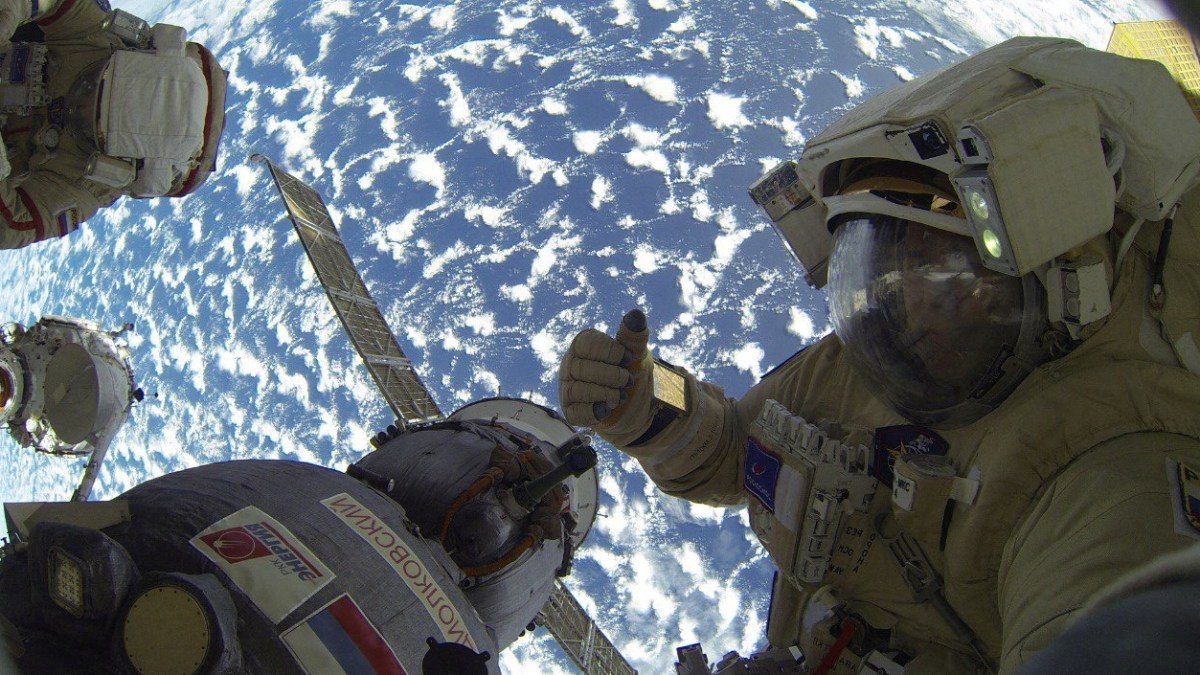Tests are being conducted to determine if the Soyuz MS-22 capsule is unfit for flight after a coolant leak.
The Russian Space Agency is considering a “bailout” plan to get three crew members home ahead of schedule International Space Station (ISS) After the Soyuz capsule had a coolant leak.
Roscosmos and NASA officials said in a news conference Thursday that they are continuing to investigate how a coolant line in the capsule’s external radiator sustained a small hole last week, just as two astronauts were preparing for a routine spacewalk.
No final decision has been made on the exact means by which the three Russian crew members will return to Earth — whether by launching another empty Soyuz to retrieve them or by the less likely option of sending them home in the leaky capsule without most of it. radiator.
Sergei Krikalev, who leads human spaceflight programs at Russia’s Roscosmos, told reporters that a damage assessment was being done.
LIVE: Listen as we discuss the ongoing investigation into the external leak that occurred on December 14 from the Soyuz spacecraft docked at @space station. https://t.co/nLniKx5igz
– NASA (@NASA) December 22, 2022
If the thermal analysis, which assesses the air temperature inside the cabin, concludes that the Soyuz MS-22 capsule is not suitable for manned flight, then the scheduled launch of another Soyuz capsule in mid-March from the Baikonur Cosmodrome can be moved up and said the capsule will be sent to the International Space Station without a crew. .
“They are looking forward to late February to send up the next Soyuz,” added Joel Montalbano, NASA’s International Space Station program manager, who was also on the call.
If this is the case, the damaged spaceship will return to Earth without a crew.
Last week, Krikalev said the leak could have been caused by a micrometeor strike. But he and his counterparts at NASA left open the possibility of other causes, such as a hardware failure or a small piece of space debris colliding.
The International Space Station said on Wednesday that it had performed a maneuver to avoid the debris – one of three such operations so far this year. The two were earlier in June and October.
At 8:42 a.m. ET, the space station performed a predetermined debris-avoidance maneuver to provide an additional measure of the distance away from the expected path for a portion of the debris, delaying the spacewalk by @tweet. https://t.co/sRDeALLf69
– International Space Station (Space_Station) December 21, 2022
The leak on December 14 prompted mission controllers in Moscow to cancel a spacewalk as a live NASA internet feed showed what appeared to be a wave of snow-like particles spewing from the back of the Soyuz spacecraft.
The leak lasted for hours and emptied the coolant from the cooler used to regulate temperatures inside the spacecraft’s crew cabin.
NASA said that none of the International Space Station crew were in any danger of a leak.
The crew compartment of the Russian capsule is currently ventilated while allowing airflow through an open hatch into the International Space Station. NASA has previously said that capsule temperatures remain “within acceptable limits” but Krikalev added that the temperature would rise rapidly if the ISS hatch was closed.
The International Space Station (ISS) is a science laboratory that stretches the length of a football field, orbits about 400 kilometers (250 miles) above Earth, and has been continuously busy for 20 years.
The station is managed by a partnership led by the United States and Russia, which also includes Canada, Japan and 11 European countries. It has remained a rare venue for cooperation between Moscow and Washington since the start of the Russian war on Ukraine and the subsequent Western sanctions on Russia.
Cosmonauts Sergey Prokopyev and Dmitry Petlin — who were fit for spacewalks at the time the leak was discovered — flew to the International Space Station aboard the now-defunct MS-22 capsule with American astronaut Frank Rubio in September.
Four more ISS crew members — two more from NASA, a Russian third and a Japanese astronaut — traveled to the ISS in October via a NASA-contracted SpaceX Crew Dragon crew. They also remain aboard, and their capsule is parked on the International Space Station.
The leak upended International Space Station procedures in Russia for the coming weeks, forcing the suspension of all future spacewalks at Roscosmos as officials in Moscow shifted their focus to the leaking MS-22.

“Amateur organizer. Wannabe beer evangelist. General web fan. Certified internet ninja. Avid reader.”




/cdn.vox-cdn.com/uploads/chorus_asset/file/25550621/voultar_snes2.jpg)


More Stories
Watch a Massive X-Class Solar Explosion From a Sunspot Facing Earth (Video)
New Study Challenges Mantle Oxidation Theory
The theory says that complex life on Earth may be much older than previously thought.